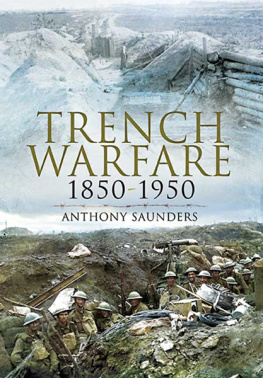
ROUTLEDGE LIBRARY EDITIONS: MILITARY AND NAVAL HISTORY
Volume 3
THE EVOLUTION OF MODERN LAND WARFARE
THE EVOLUTION OF MODERN LAND WARFARE
Theory and practice
CHRISTOPHER BELLAMY

First published in 1990
This edition first published in 2016
by Routledge
2 Park Square, Milton Park, Abingdon, Oxon OX14 4RN
and by Routledge
711 Third Avenue, New York, NY 10017
Routledge is an imprint of the Taylor & Francis Group, an informa business
1990 Christopher D. Bellamy
All rights reserved. No part of this book may be reprinted or reproduced or utilised in any form or by any electronic, mechanical, or other means, now known or hereafter invented, including photocopying and recording, or in any information storage or retrieval system, without permission in writing from the publishers.
Trademark notice: Product or corporate names may be trademarks or registered trademarks, and are used only for identification and explanation without intent to infringe.
British Library Cataloguing in Publication Data
A catalogue record for this book is available from the British Library
ISBN: 978-1-138-90784-3 (Set)
ISBN: 978-1-315-67905-1 (Set) (ebk)
ISBN: 978-1-138-91923-5 (Volume 3) (hbk)
ISBN: 978-1-315-68792-6 (Volume 3) (ebk)
Publishers Note
The publisher has gone to great lengths to ensure the quality of this reprint but points out that some imperfections in the original copies may be apparent.
Disclaimer
The publisher has made every effort to trace copyright holders and would welcome correspondence from those they have been unable to trace.
The Evolution of Modern Land Warfare
Theory and practice
Christopher Bellamy

First published 1990
by Routledge
11 New Fetter Lane, London EC4P 4EE
Simultaneously published in the USA and Canada
by Routledge
a division of Routledge, Chapman and Hall, Inc.
29 West 35th Street, New York, NY 10001
Printed in Great Britain
1990 Christopher D. Bellamy
All rights reserved. No part of this book may be reprinted or reproduced or utilized in any form or by any electronic, mechanical, or other means, now known or hereafter invented, including photocopying and recording, or in any information storage or retrieval system, without permission in writing from the publishers.
British Library Cataloguing in Publication Data
Bellamy, Chris, 1955
The evolution of modern land warfare : theory and practice.
1. Land warfare, history 2. Military art and science
I. Title
355.0209
ISBN 0-415-02073-5
Library of Congress Cataloging in Publication Data
has been applied for
ISBN 0-415-02073-5
For Andrea
a straggling road in Spain
Chesterton, Lepanto
Before everyone who wishes to become a commander-in-chief, there lies a book entitled The History of War. It is not always, I must admit, very amusing. It involves toiling through a mass of by no means exciting details. But by their means we arrive at facts and at the root of it lies the perception of how everything has happened, how it was bound to happen, and how it will again happen.1
Field Marshal Count von Schlieffen
In order for a man to become a great soldier it is necessary for him to be so thoroughly conversant with all sorts of military possibilities that whenever an occasion arises he has at hand without effort on his part a parallel. To attain this end it is necessary to read military history in its earliest and hence crudest form, and to follow it down in natural sequence.2
General George S. Patton
No Social Democrat at all familiar with history has ever doubted the tremendous importance of military knowledge, of military technique, of military organization as an instrument which the masses of people, and classes of the people, use in resolving great, historical conflicts.3
Vladimir Ilych Lenin
Contents
5.1 Army OMG operations, as presented to SHAPEX briefing, 1982
Acknowledgements
My thanks in particular to Colonel Mohammed Y. Effendi, retd, Pakistan Army, for his interest and help, especially in relation to the military history of South Asia, and to those at the US Army Command and General Staff College, Fort Leavenworth, Kansas, who suggested I undertook a special study of deep operations in historical perspective, which became the first Case study (). Dr Bruce Menning, Dr Jake Kipp, Dr Roger Spiller, Dr Bob Berlin and Dr Robert Baumann and Colonel David Glantz, all commented on the initial draft and suggested further sources and lines of inquiry. They have thus given to that portion of the book an additional, most rigorous but helpful and stimulating, layer of supervision.
Although this book was substantially complete by October, 1987, the process of revision and fine tuning to current requirements took place after my arrival in Edinburgh. I therefore benefited from conversations, in other contexts, with John Erickson, who alerted me to philosophical issues affecting scientific revolutions, and to the utility of such devastating secret weapons as the block footnote. Carl Van Dyke, who shares my interest in the overwhelmingly rich body of nineteenth- and early twentieth-century military literature, much of which has been ignored or forgotten, provided stimulating ideas and alerted me to certain sources, and Lieutenant Colonel Joseph Lahnstein, USA, our Research Associate, always provided new and original insights, lightened with humour and a devastating turn of phrase. I am particularly grateful for Joes help on local wars and special operations (). I also benefited from discussions with David McWhinnie, Lamancha Productions, with whom I worked in the complementary medium of film and video on military history.
Finally, I must thank Mr Carl Giles, the well known Express cartoonist, whose work I have admired for many years, for tracking down the cartoon and providing me with a special copy, a picture which, in my estimation, is worth about 60,000 words.
University of Edinburgh
Preface to the Reprinted Edition
A quarter of a century has elapsed between the publication of this book in 1990 and its re-issue in 2015. So it has stood the test of time. When the book was released in December 1990, the author, then Defence Correspondent for the London Independent newspaper, was about to experience his first war as an active participant.
The 1991 Gulf War was exactly the kind of war foretold in the book. The first of the books conclusions (). For decades these ideas, which had been explored in the present book, had been the preserve of staff officers and a few dedicated specialists. But the 1991 Gulf War was actually an improvement on this conceptual vision. The comparatively sterile desert was a plainer canvas, a cleaner sheet, than the populous and complex counterpane of Europe where such operations had been expected to take place. A classical military paradigm developed for another scenario was transferred to a different environment, emplaced and worked even better. That, by any stretch of the imagination, was extraordinary.
The present book was taken up by those working on military theory and doctrine as a text, above all, on the evolution of the operational level of war. In this capacity it was used by the UKs Higher Command and Staff Course in the early 1990s. But soon the books second conclusion reared its head. Large-scale warfare has priced itself out of the market (
Next page









